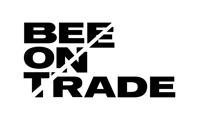It is important to note that if you are planning to import toys or children's products into the United States, they must meet strict safety standards
Children's products are defined as products designed for use by children aged 12 or younger and must meet strict safety standards when imported into the United States. A Children's Product Certificate must be obtained to ensure that these standards are met and must be provided when importing these products into the country.
It is important to be aware of these requirements to ensure compliance and avoid any potential issues during the import process. But first, what counts as a children's toy or other product?
A Children's Product is defined as a product that is intended for use by children aged 12 or younger. The Consumer Product Safety Commission (CPSC) considers a variety of factors in determining whether a product qualifies as a Children's Product, including the intended use of the product, any statements made by the manufacturer or labeling on the product indicating it is for children under 12, and whether the product is recognized by consumers as being for children under 12.
The CPSC's Age Determination Guidelines provide further information on the specific testing and standards that Children's Products must meet to be certified as safe for sale in the United States.
The CPSC requires toys to undergo third-party testing to ensure that they meet safety guidelines. These tests may include checks for durability and the concentrations of potentially harmful chemicals such as lead and phthalates.
A list of CPSC-accepted labs can be found on the CPSC website. In addition, the toy safety standards book, which outlines the safety guidelines for toys, can be purchased from ASTM International.
Toys are classified with the HS Code 9503.00.00 under the U.S. Harmonized Tariff Schedule and are generally duty-free, though other fees such as the Merchandise Processing Fee and Harbor Maintenance Fee may still apply.
To import children's products into the United States, a Children's Product Certificate (CPC) is required to certify that the product meets safety requirements. The CPC must identify the product covered, list the specific regulations that apply to the product, provide contact information for the individual maintaining records of test results, and include information about the date and place of manufacture and testing, as well as the third-party testing facility that conducted the tests.
More information about CPC requirements and examples of CPCs can be found on the CPSC website. It is important to ensure that all necessary documentation, including the CPC, is obtained and provided when importing children's products into the United States to avoid any potential issues during the import process.
In addition to the Children's Product Certificate, the importer or manufacturer of children's products must also have a tracking label permanently attached to the product or its packaging. The tracking label must include the date and location of production, batch or run number, and other identifying characteristics as determined by the manufacturer.
These requirements help to ensure that children's products can be traced in the event of a recall or other issue. More information about requirements for labeling children's products can be found on the CPSC website. It is important to ensure that all necessary labeling is in place and properly applied to meet regulatory requirements and ensure the safety of children using the product.
Toys and other products intended for use by infants (under 3 years of age) and toddlers (under 5 years of age) are subject to even stricter safety standards than other children's products. Examples of these products include cribs, play yards, infant carriers, strollers, and walkers.
These products are divided into several different subcategories, each with its specific requirements. It is important to be aware of these requirements to ensure compliance when importing or manufacturing products for use by infants and toddlers. More information about the specific testing requirements for these products can be found on the CPSC website.
Products intended for use by infants and toddlers must also meet the standards set by the Small Parts Regulation to prevent small children from inhaling or choking on small objects. If a product or part of a product fits entirely into a specially designed test chamber that approximates the throat of a small child, it is considered a choking hazard and will be banned.
In addition to meeting these standards, these products must also include a postage-paid product registration card to improve recall effectiveness. The registration card should be attached to the surface of the product and include the manufacturer's name and contact information, model name and number or another identifier, and the date of manufacture.
It should also have space for the consumer to provide their name and contact information. The importer or manufacturer is also required to provide an option to register online and must maintain a record of those who have registered to notify consumers of any safety issues or recalls. More information about the Small Parts Regulation can be found on the CPSC website.
In addition to obtaining the necessary safety certifications, it is important to consider copyright and trademark issues when importing toys. If you are importing a product that has been copyrighted by another company or person, you must provide a letter of license to Customs to import the product into the United States.
Customs inspects products entering the country for compliance with copyright laws, and products that are considered to be infringing on existing copyright may be barred from entering the country.
If you have concerns about copyright issues, it is a good idea to consult with your Beeontrade team and search the Customs IPR database to ensure that your product is not listed. It is important to be aware of these issues to avoid any potential problems during the import process.
